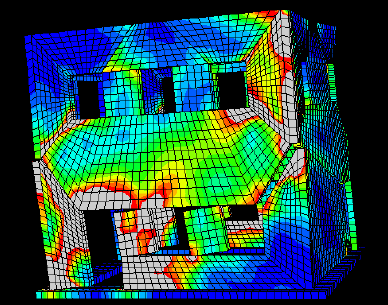1 Willett Professor of Engineering, University of Illinois at Urbana-Champaign, USA, d-abrams@illinois.edu
ABSTRACT
As the oldest construction material, masonry has experienced more earthquakes than any other construction form. Yet, it is widely acknowledged in the seismic engineering community that masonry is a primary contributor to mortalities, injuries, damage and economic losses when earthquakes of moderate or strong intensities strike urban areas. Even some essential facilities such as firehouses and hospitals, or school buildings, are constructed of unreinforced masonry in seismic regions, and thus endanger public safety. However, with current technologies masonry construction can be made to perform well in earthquakes. This paper provides an overview of how this can be done from a long-range perspective, and what is needed to advance masonry as a competitive construction alternative in seismic regions.
As an introduction, earthquake risk and fragility are discussed, followed by examples of potential losses and how they can be estimated across a community. Mitigation action plans passed by the State of California to reduce risk attributable to collapse and damage of unreinforced masonry (URM) buildings are summarized as a model for other municipalities to follow. Useful tools for creating building inventories are presented as well as details for retrofitting seismic deficiencies in URM buildings. Performance-based seismic rehabilitation of existing masonry construction is addressed in terms of new standards. In particular, the use of displacement-based approaches for masonry is discussed.
Research needed to make masonry construction seismically benign is outlined. Views on what is necessary over the next several decades to mitigate the effects of disastrous earthquakes are given in terms of the cadre of masonry research talent, and current research capabilities. Estimates are given of the economic impact of future research expenditures on the reduction of earthquake loss. The primary conclusion is that the oldest construction material can be made seismically benign if the right steps are taken through a concerted program of long-range structural engineering research.
KEYWORDS: codes, damage, earthquake, loss, risk, seismic, unreinforced masonry
637.pdf



